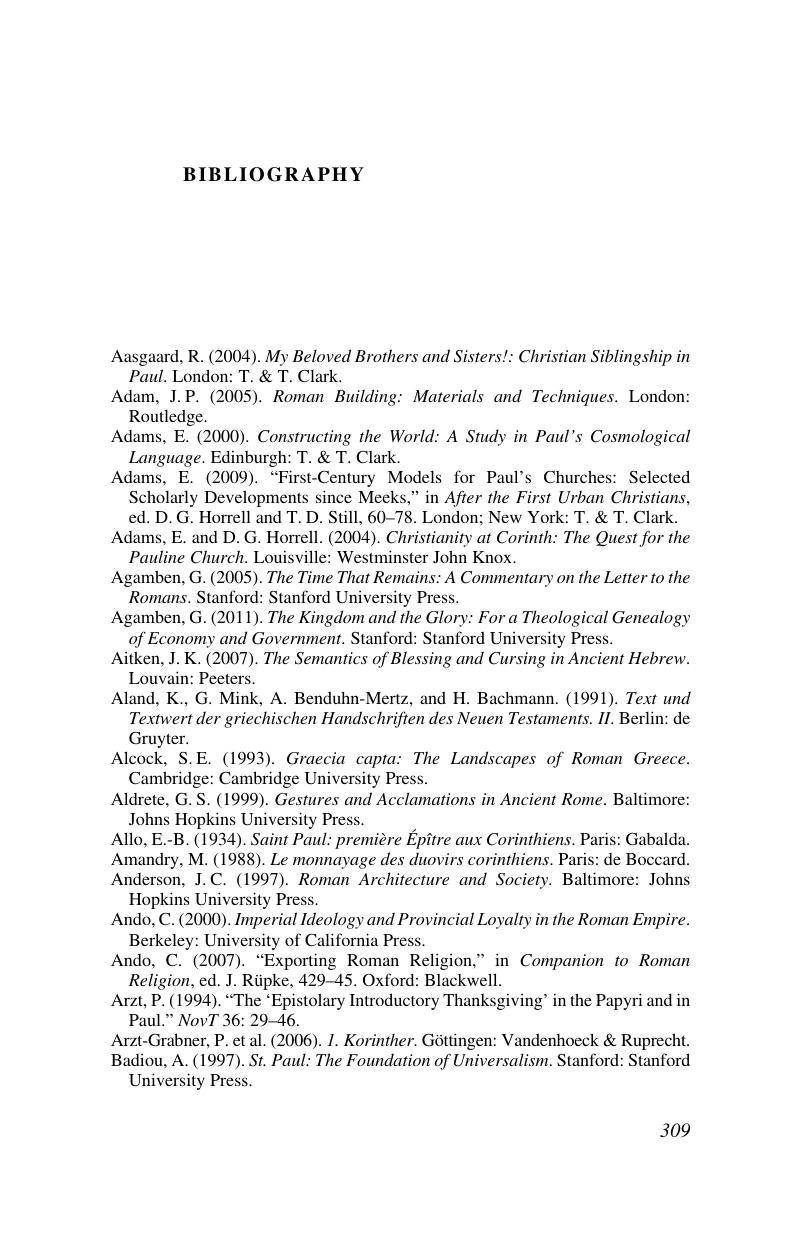Book contents
- Paul’s Political Strategy in 1 Corinthians 1–4Constitution and CovenantVolume 163
- Society for new Testament Studies
- Paul’s Political Strategy in 1 Corinthians 1–4
- Copyright page
- Contents
- Figures
- Book part
- Glossary
- Introduction: Constituting the Argument
- Part I Constitution and covenant in Corinth
- Part II Constitution and covenant in 1 Corinthians 1:1–4:6
- Bibliography
- Index Locorum
- Subject index
- Modern Author Index
- References
Bibliography
Published online by Cambridge University Press: 05 July 2015
- Paul’s Political Strategy in 1 Corinthians 1–4Constitution and CovenantVolume 163
- Society for new Testament Studies
- Paul’s Political Strategy in 1 Corinthians 1–4
- Copyright page
- Contents
- Figures
- Book part
- Glossary
- Introduction: Constituting the Argument
- Part I Constitution and covenant in Corinth
- Part II Constitution and covenant in 1 Corinthians 1:1–4:6
- Bibliography
- Index Locorum
- Subject index
- Modern Author Index
- References
Summary

- Type
- Chapter
- Information
- Paul's Political Strategy in 1 Corinthians 1–4Constitution and Covenant, pp. 309 - 334Publisher: Cambridge University PressPrint publication year: 2015



